United States stamp Scott #121 is part of the 1869 Pictorial Issue, a landmark series in American philately that introduced designs beyond the standard portraits of political leaders. This issue included scenes of history, transportation, and allegorical symbols.
The 30-cent denomination was essential in representing higher postal values required for foreign mail and heavy-weight correspondence. Scott #121 depicts the American shield flanked by an eagle and U.S. flags, a design that carried strong national symbolism during the Reconstruction era following the Civil War. As part of the bicolor subset within the series, it stood alongside the 15-cent and 24-cent issues in presenting a more elaborate visual presentation.
The stamp was authorized to provide efficiency in fulfilling higher-rate international and domestic postal needs, directly reflecting the growing scale of the U.S. postal system.
Design & Print
Scott #121 was printed by the National Bank Note Company, which secured the U.S. stamp contract during the administration of Postmaster General Alexander Randall. Issued in 1869, approximately 304,650 copies of the 30-cent denomination were produced. The design features a central vignette of the U.S. shield surmounted by an eagle, with American flags extending outward from both sides.
The shield and flags were printed in carmine, while the eagle and surrounding details were engraved in ultramarine, producing a distinct bicolor effect. The denomination “30” appears in prominent numerals at the bottom corners, with “THIRTY CENTS” spelled out below.
Like other stamps in the series, it was printed on hard wove paper and impressed with the G grill, a device of small square indentations pressed into the paper to allow cancellation ink to penetrate deeply. The choice of this patriotic design reflected the government’s intent to emphasize unity and national strength during a period of political rebuilding.
Postal Usage
The 30-cent denomination was primarily intended for international mail, especially heavier letters and packages sent to Europe or destinations where treaty arrangements required higher postage than the standard 12-cent or 15-cent values. In some cases, it covered the full prepayment for letters weighing up to a full ounce when sent by contracted packet service across the Atlantic.
Domestically, it could be used on larger parcels, registered mail, or combined with lower denominations to meet specific postal requirements. The stamp’s role within the 1869 series reflected the Post Office Department’s effort to provide a balanced range of denominations to handle the increasingly complex rate structures of both domestic and international systems.
Its utility extended beyond ordinary correspondence, making it a practical choice for businesses, merchants, and legal offices engaged in heavy or overseas mailing.
Identification
Scott #121 is identified by its bicolor format, with the ultramarine frame and eagle surrounding the carmine shield and flags. It is perforated 12, printed on hard wove paper, and bears the G grill, generally measuring 9–13 points by 11–13 points.
The engraving is notable for the eagle’s wings spread upward above the shield and the flags extending symmetrically on both sides. The denomination “30” appears inside small oval frames at the lower corners, while “U.S. POSTAGE” is displayed above the central vignette.
It is distinguished from other stamps in the 1869 Pictorial Issue not only by its denomination but also by its combination of patriotic iconography and bicolor printing. Attention should be given to the balance of the ultramarine and carmine impressions, as well as the clarity of the shield’s horizontal stripes, the eagle’s feather detail, and the grill impression. These features allow precise identification of Scott #121 as the 30-cent issue of the 1869 series.




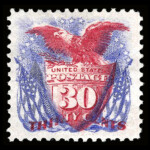
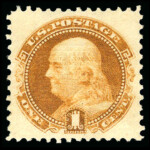
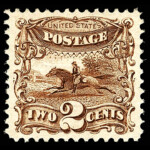
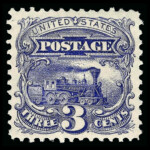
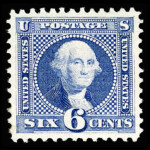
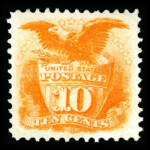

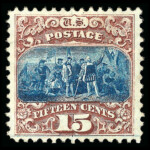
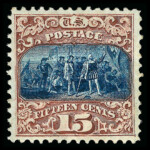

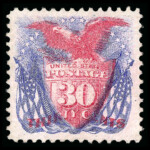













Ask A Question Or Leave A Comment